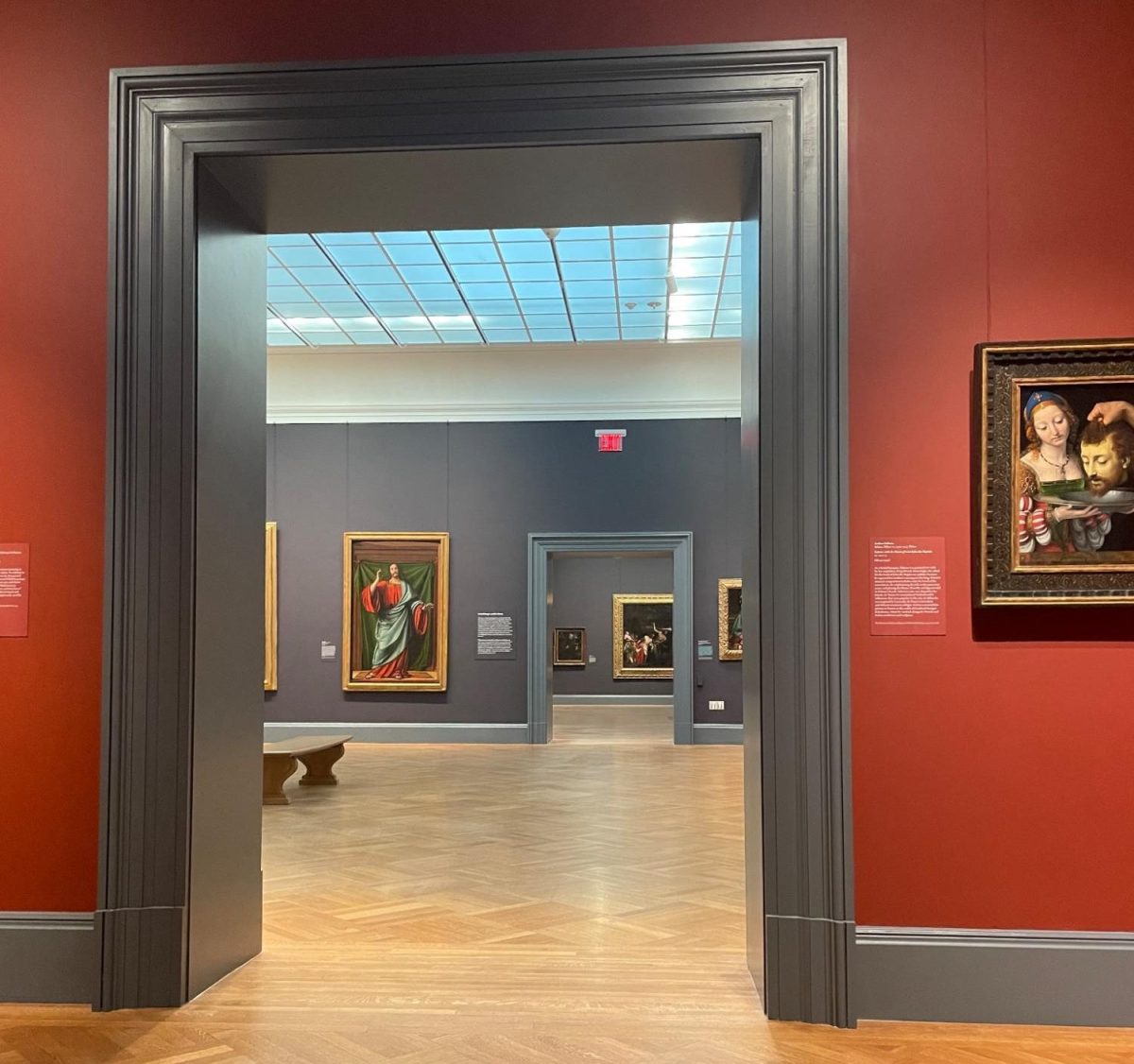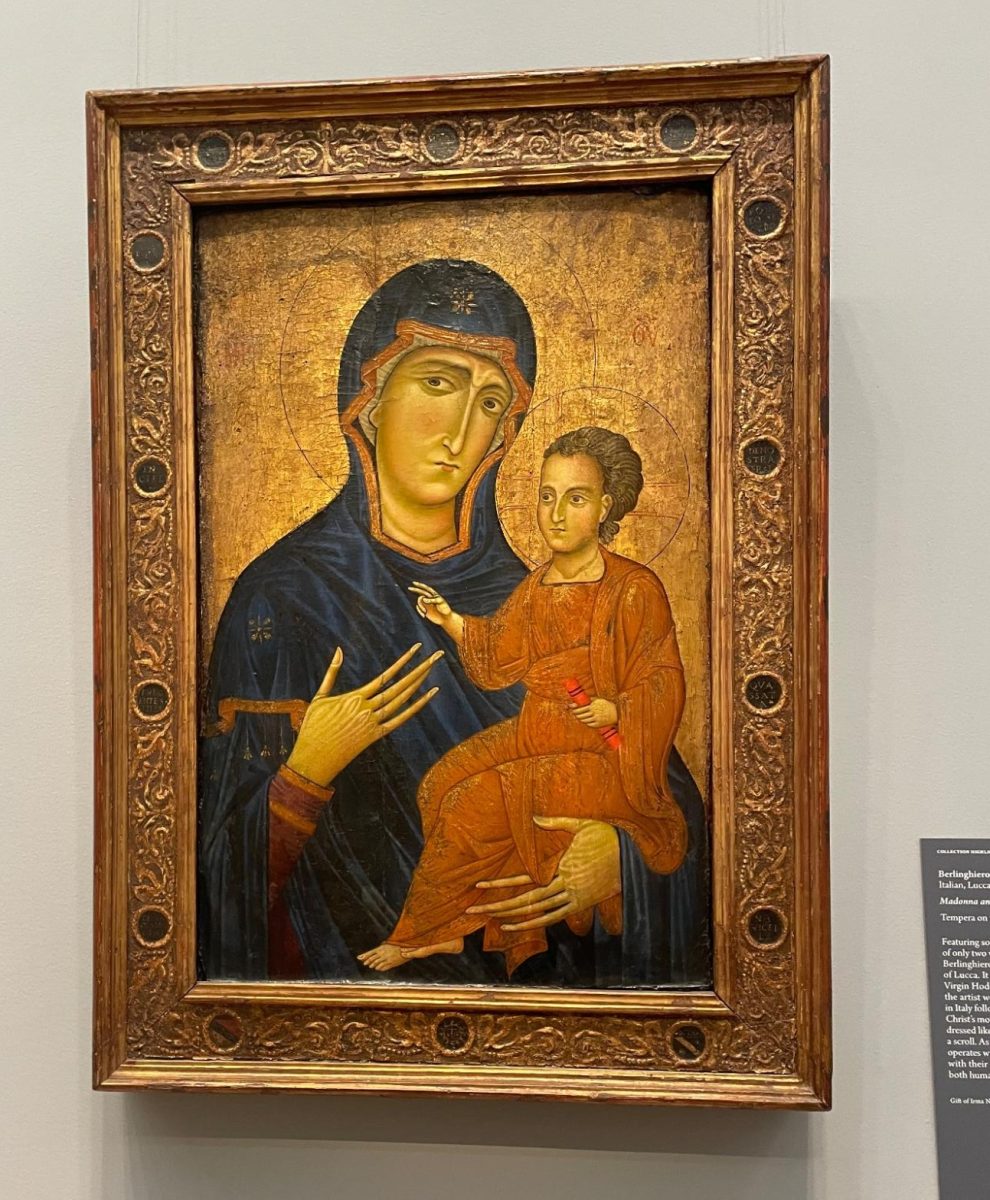The European Painting galleries have historically been one of the most popular places at the Metropolitan Museum of Art, and for good reason. They feature almost 800 priceless pieces from the 1300s to the 1800s, including paintings, intricate sculptures, musical instruments and even an antiquated sword.
But five years ago, the MET decided that the Truman-era rooms were out and that renovations were in. Gone were the buzz of tourists, the faded robin’s egg walls and the grand art. In their place stood a patchwork of dropcloth, the smell of new paint, and the hum of machinery.
Spearheaded by architectural company Beyer Blinder Belle, workers replaced 30,000 feet of skylights, widened the rooms, installed a new air conditioning system, and slabbed fresh paint on the walls. All it took was 150 million dollars.
Now, as of January 2024, the galleries are open to the public once more, with the extensive collection reunited for the first time since 2018. And, as it turned out, these galleries underwent both internal and external changes.
No longer are the art pieces arranged by their regional origins, with the Dutch paintings on one end and the French on the other. Visitors now walk through the continent’s art on a chronological pathway, starting in the late Middle Ages and ending in the early Industrial Era.
“We’re not just throwing everything upside down and seeing where it lands,” said Stephan Wolohojian, the head curator, in an interview with The New York Times. “There is real order.”
But as I stood in front of the exhibition doors on a cold winter morning, order was not the first word that came to mind. In fact, I was distinctly overwhelmed. With doors on each side of the initial room, all leading to different centuries of European art, I didn’t know where to start.
While each gallery in the exhibition is marked with a number, the viewers themselves are encouraged to choose where to begin and what path to follow. You can take the chronological pathway, which I ultimately decided on, or start in the middle with Classical art, or even work your way backward from the later rooms.
Without much thought, I entered the room marked by a small #2. Walking in, I was encircled in early portraiture: dark, stoic Dutch paintings on one side, and colorful, light-filled Italian works on the other. They served as an early sign of what the galleries had to offer — a place where art from each nation is compared and contrasted in each section as viewers progress through each decade and encounter various cities, religions, and groups of people.
The following rooms further delve into Renaissance art: sloping Venetian paintings with almost theatrical intensity, Netherlandish depictions of Christ and his disciples, and masterpieces by Dürer and Lucas Cranach the Elder.
One of the most interesting things I found as I traversed each Renaissance room was how the depiction of the Madonna and Child evolved. In the first room, we are met with Berlinghiero’s Middle Age interpretation. Here, Mary is cloaked in a blue shawl, Jesus in her arms, taking the appearance of a mini man rather than an infant child. Their faces are angular and lacking dimension, and it’s clear that the artist didn’t yet have the ability to depict the figures in a life-like manner.
In contrast, Renaissance paintings in further galleries represent the figures quite differently. Marked by ostentatious gold frames, these images depict Mary and Jesus in 3D motion, Jesus as a nude, chubby baby, and Mary as an affectionate, attentive mother.
That was far from the only chronological change; as I progressed through the exhibit, I noticed that as its themes evolved, so did the shade of the gallery walls.
While the walls at the beginning of the exhibit are light, almost white in their stark pallor, the end of the exhibit is marked by deep reds and bottomless blues. The shift in material both reflects the transition in time period and in topic: light turns to dark as the viewer eases out of religious imagery and into snapshots from a plethora of different painters.
In particular, the exhibition gives a new spotlight to previously absent female artists. Their work is now spread throughout the exhibition: a striking duo of paintings by Elisabeth Louise Vigée Le Brun in a section titled Hierarchy, Gender and the French Academy, Marie Victoire Lemaine’s Interior of a Woman Painter’s Studio in a gallery displaying artist’s workspaces, and, of course, masterful still lifes by prominent painters Anna Valayer-Coster, Orsola Maddalena Caccia, and others.
Still-life paintings are some of the stars of the exhibition. Walking through the still-life galleries (yes there are multiple!), I found myself enveloped in a world of lush floral bouquets, ornate food platters, skulls and seafood shells. An unlikely group of items, yes, but all of them pointed to a life of lavish excess and gentility. Aided by the van Ruysdael and Vermeer paintings only a few doors down, the still-life art helped to highlight the era’s burgeoning wealth gap.
In April of 2023, I had the privilege of viewing the Vermeer retrospective at the Rijksmuseum in Amsterdam. Seeing some of his paintings again was like a breath of fresh air, as I had missed the delicate brushstrokes and refreshing simplicity that mark each of his 34 pieces attributed to him. Other works by Vermeer such as The Maid, which weren’t present at the retrospective due to their fragility, also provided a welcome and much appreciated surprise at the MET.
Vermeer’s trademark is his use of light, but it was the exhibition as a whole that seemed to be illuminated this time around. The enormous skylights were a noticeable addition; previously dark rooms were transformed into brightly lit spaces. The paintings themselves also seemed as if they were given a new varnish; they sparkled and glowed in the fresh illumination.
These updated paintings included many unseen portraiture of black and brown figures, pushed into prominence by the restoration. There is a new William Wood painting entitled Joanna de Silva, a striking depiction of a North African commander by Lucas Cranach the Elder, and even a Hieronymus Bosch painting of the Adoration of Magi that centers around a black king observing the proceedings.
Wood’s painting is particularly extraordinary, a snapshot of a Bengali nursemaid dressed to the nines in the era’s highest foreign finery and jewelry. The sky behind the figure may be stormy, but Joanna de Silva appears bright and brimming with life. Her piercing gaze is fixed eastward, looking to anyone who might challenge the high stature she so clearly takes up.
As I made my way towards the end of the exhibition, I found to my surprise that it had no traditional closing. The galleries are like a maze, and rather than telling you where to leave, multiple opportunities to exit the exhibit invite the viewer to choose their own ending.
The message is abundantly clear: the exhibition, like all of art itself, is subjective. In the end, it is the viewers who choose how they engage with the paintings, and it is viewers who will choose how they leave them.
The shift in color both reflects the transition in time period and in topic: light turns to dark as the viewer eases out of religious imagery and into snapshots from a plethora of different painters.


